Experts seek answers behind constant quakes in Puerto Rico
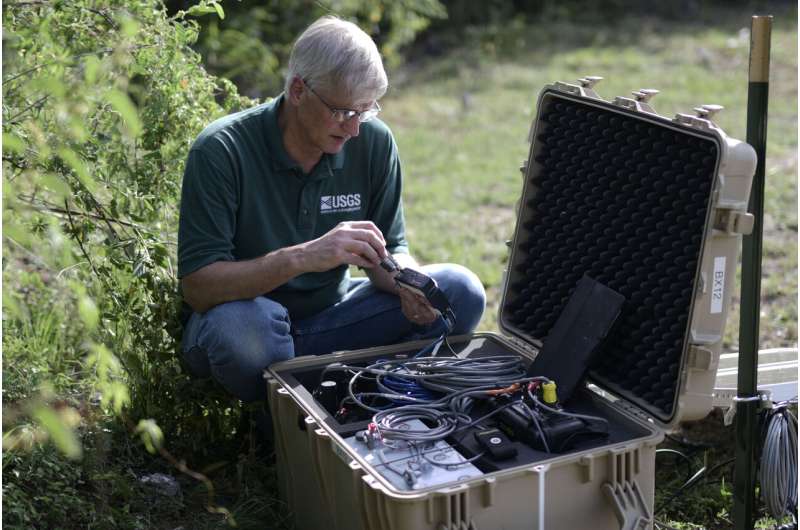
Seismologists in southern Puerto Rico gingerly walked around a patch of dirt that marks the location of recently buried sensors they hope will reveal answers behind the constant and unusual shaking in the region that has terrified residents.
Alena Leeds with the U.S. Geological Survey stopped in front of the sensors on Tuesday afternoon and scrutinized the information that popped up on the screen in front of her.
"Here comes one! There's an aftershock," she said as the software showed red, blue and green lines that squiggled up and down.
More than 1,280 earthquakes have hit Puerto Rico's southern region since Dec. 28, more than two dozen of them magnitude 4.5 or greater, according to the USGS. Among them was a 6.4 magnitude quake that hit on Jan. 7, killing one person and injuring nine others, and a 5.9 magnitude aftershock that occurred Saturday, causing further damage. Government officials say the quakes have caused a preliminary $110 million in damage, toppled part of a famed rock formation landmark and damaged or destroyed more than 550 homes.
The seismic activity that experts say is unusual but not unexpected has unleashed scientific debate about what's causing it and drawn international attention to the area, where more than 4,000 people have sought shelter as they wonder when the ground will stop trembling.
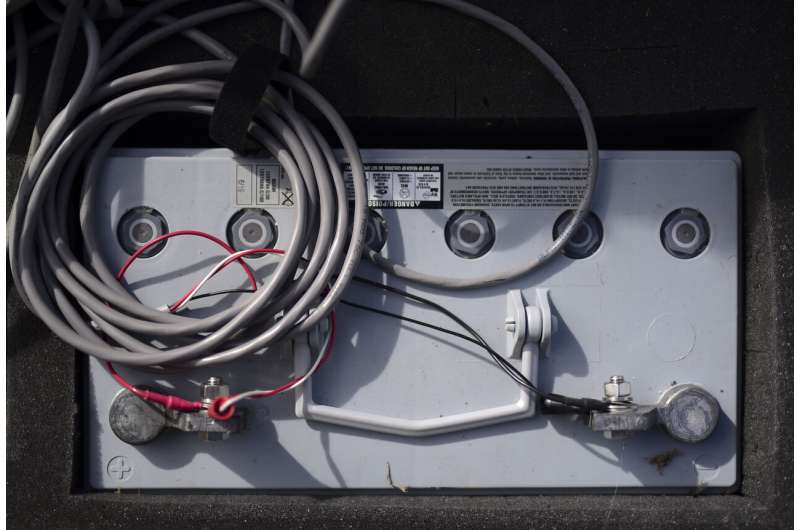
"I don't plan on stepping foot in the house for any reason until this stops," said Adrián Santos, a 45-year-old mechanic who has been living in a tent in the southern coastal city of Ponce for nearly a week with nine other relatives. "The shaking is unbearable."
Scientists say they don't yet know much about the faults causing the quakes, although some experts believe at least three faults are involved, including the Punta Montalva one in southwest Puerto Rico that students and professors at the University of Puerto Rico in Mayaguez discovered in the early 2000s.
"There are a lot of different opinions but not a lot of data," said Elizabeth Vanacore, an associate research professor at the university, which also houses the island's Seismic Network.
Overall, Puerto Rico is located in a very seismically active area, with the North America and Caribbean tectonic plates converging at a rate of about 2 centimeters a year, said Gavin Hayes, a USGS research geophysicist. To the north part of the island, the North America plate is moving past and sinking below Puerto Rico, while in the southern region, the Caribbean plate is sinking into the mantel underneath the island.
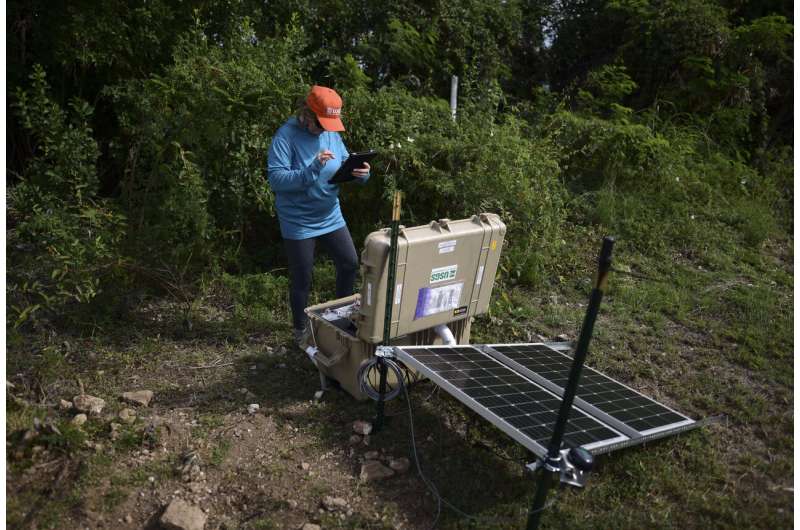
"Essentially, the island is being squeezed between these two tectonic plates," he said.
In the last 50 years, 10 earthquakes of magnitude 4 and higher have occurred within 50 kilometers of the recent 6.4 magnitude epicenter prior to Dec. 28, said Lindsay Davis, with USGS's earthquake disaster assistance team manager.
She said the rate of aftershocks following the 6.4 magnitude quake is higher than expected, but still within normal range. She also said Saturday's 5.9 magnitude quake was within the range of what was expected for the aftershock sequence.
Experts say the likeliest scenario is that the frequency of aftershocks will decrease in the next 30 days, noting that moderately sized ones could still further damage structures. A less likely scenario is another earthquake just as strong as the 6.4 one occurs in the same area, an event known as a doublet. A much less likely scenario is that an earthquake significantly larger than the 6.4 one hits Puerto Rico.
-
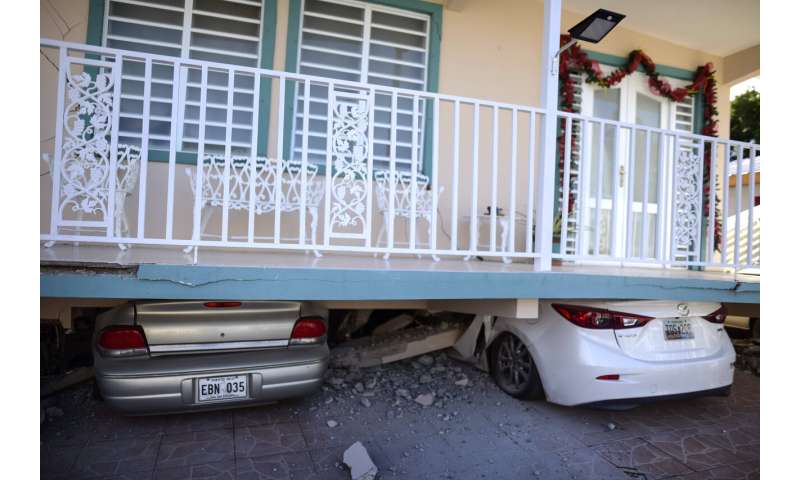
Cars are crushed under a home that collapsed after an earthquake hit Guanica, Puerto Rico, Monday, Jan. 6, 2020. A 5.8-magnitude quake hit Puerto Rico before dawn Monday, unleashing small landslides, causing power outages and severely cracking some homes. There were no immediate reports of casualties. (AP Photo/Carlos Giusti) -
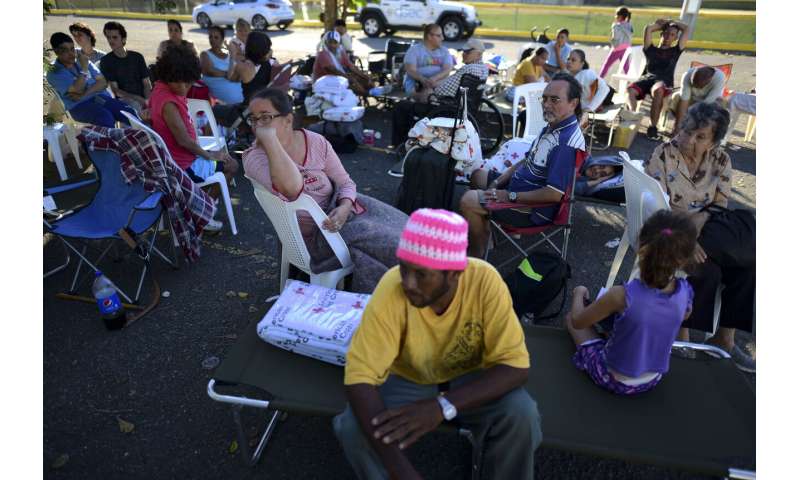
Neighbors gather outside a shelter afraid of aftershocks after an earthquake in Guanica, Puerto Rico, Tuesday, Jan. 7, 2020. A 6.4-magnitude earthquake struck Puerto Rico before dawn on Tuesday, killing one man, injuring others and collapsing buildings in the southern part of the island. (AP Photo/Carlos Giusti) -
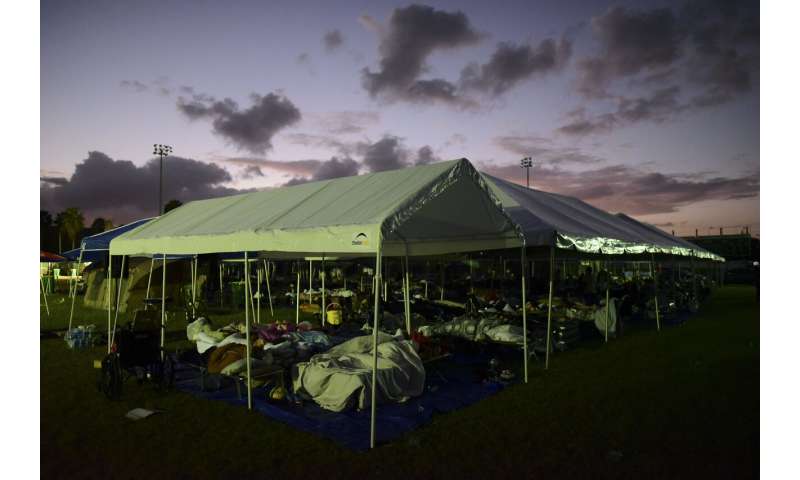
Tents and cots are set up for people whose homes are either destroyed or unsafe to enter after an 6.4 magnitude earthquake, at a baseball stadium amid aftershocks and no electricity in Guayanilla, Puerto Rico, at sunrise Friday, Jan. 10, 2020. Hundreds of thousands of Puerto Ricans are still without power and water, and thousands are staying in shelters and sleeping on sidewalks since Tuesday's earthquake. (AP Photo/Carlos Giusti) -
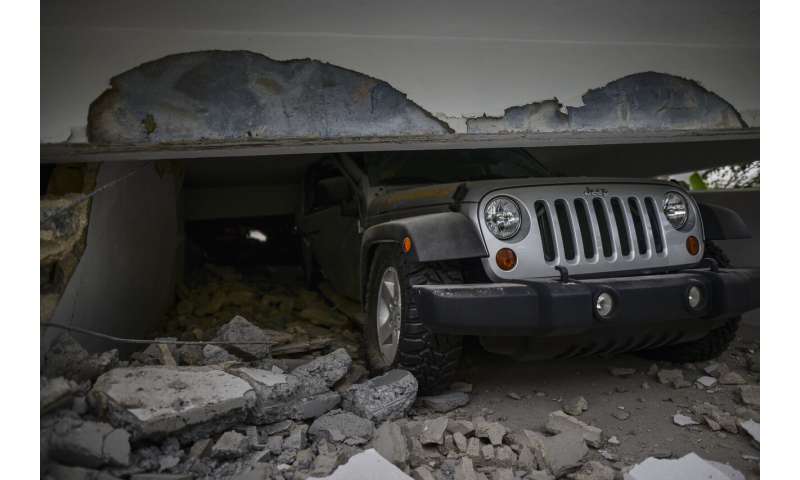
A car is crushed under a home that collapsed after the previous day's magnitude 6.4 earthquake in Yauco, Puerto Rico, Wednesday, Jan. 8, 2020. More than 250,000 Puerto Ricans remained without water on Wednesday and another half a million without power, which also affected telecommunications. (AP Photo/Carlos Giusti) -
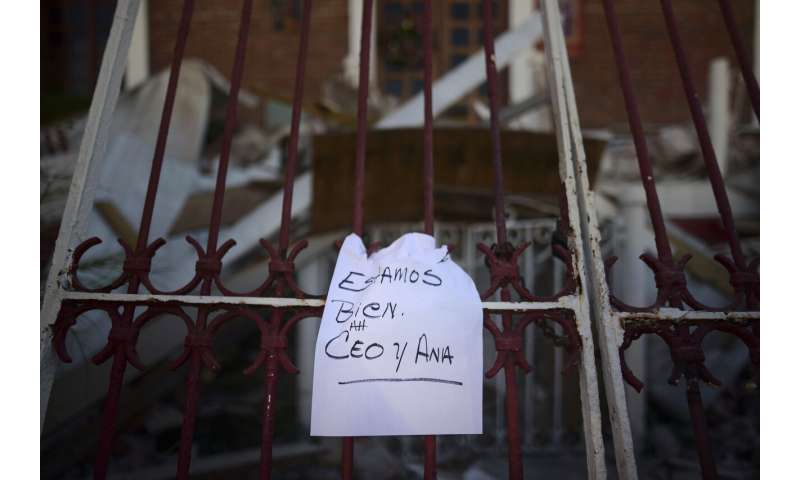
A note that reads "We're well. Ceo and Ana," hangs on a fence after an overnight earthquake in Guayanilla, Puerto Rico, Tuesday, Jan. 7, 2020. A 6.4-magnitude earthquake struck Puerto Rico before dawn on Tuesday, killing one man, injuring others and collapsing buildings in the southern part of the island. (AP Photo/Carlos Giusti) -
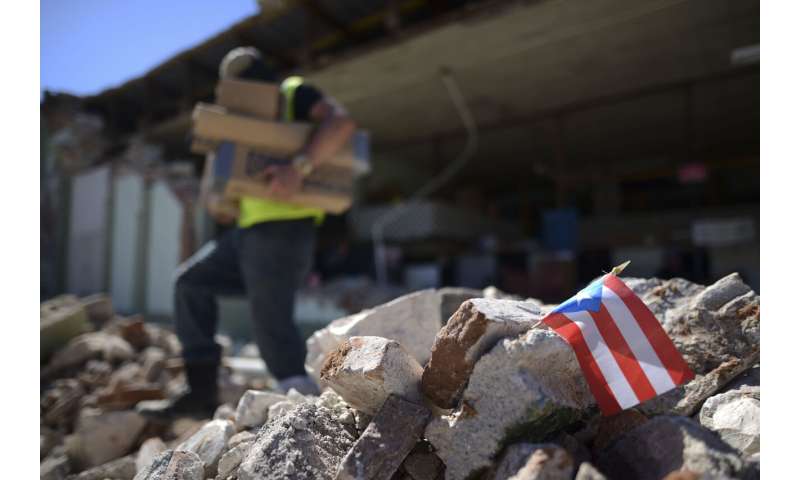
A Puerto Rican flag hangs within the rubble, after it was placed there where store owners and family help remove supplies from Ely Mer Mar hardware store, which partially collapsed after an earthquake struck Guanica, Puerto Rico, Tuesday, Jan. 7, 2020. A 6.4-magnitude earthquake struck Puerto Rico before dawn on Tuesday, killing one man, injuring others and collapsing buildings in the southern part of the island. (AP Photo/Carlos Giusti) -
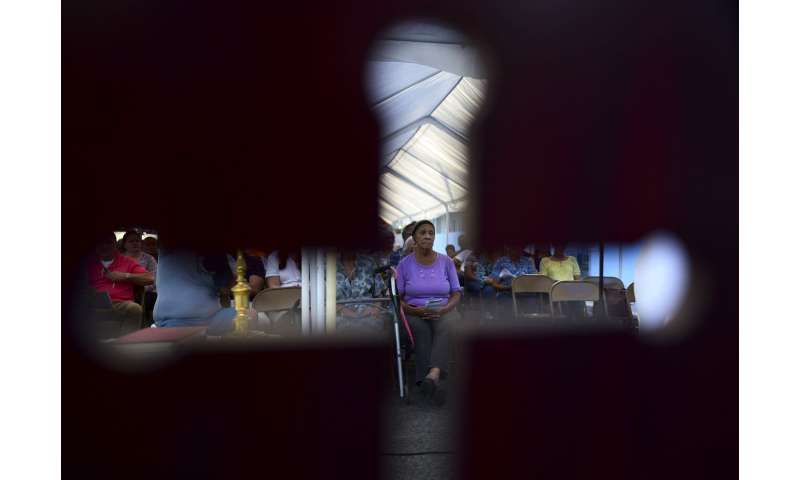
Seen through the cut-out shape of a cross on a priest's chair, a woman attends an outdoor Mass under a tent set up near the Immaculate Concepcion Catholic Church, which sustained earthquake-related damaged earlier in the week, following a magnitude 5.9 quake earlier in the day in Guanica, Puerto Rico, Saturday, Jan. 11, 2020. The morning quake caused further damage along the island's southern coast, where previous recent quakes have toppled homes and schools. (AP Photo/Carlos Giusti) -
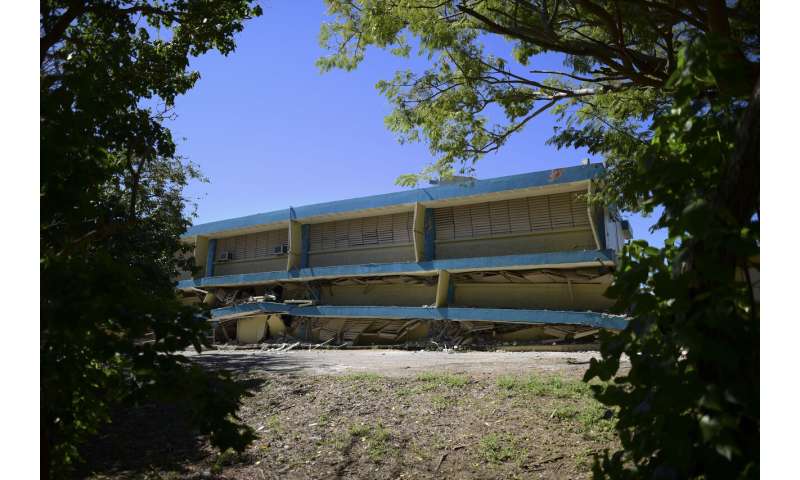
The Adripina Seda public school stands partially collapsed after an earthquake struck Guanica, Puerto Rico, Tuesday, Jan. 7, 2020. A 6.4-magnitude earthquake struck Puerto Rico before dawn on Tuesday, killing one man, injuring others and collapsing buildings in the southern part of the island. (AP Photo/Carlos Giusti) -
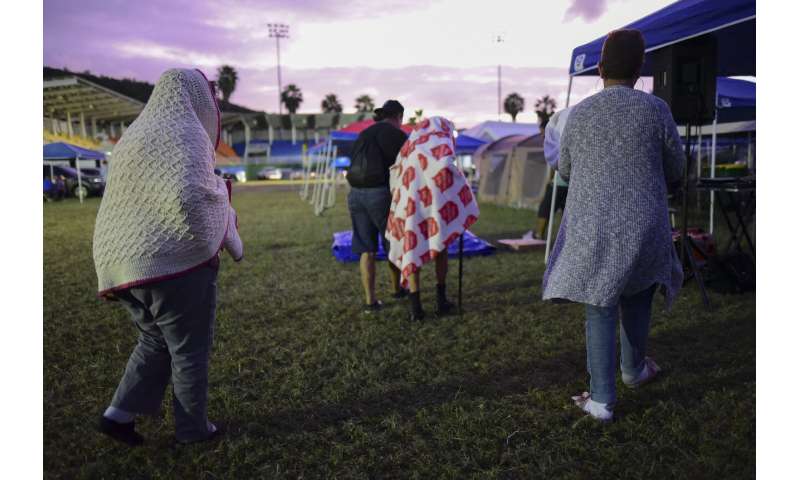
People get up after spending the night in a baseball stadium amid aftershocks and without electricity after the 6.4 magnitude earthquake in Guayanilla, Puerto Rico, at sunrise Friday, Jan. 10, 2020. Hundreds of thousands of Puerto Ricans are still without power and water, and thousands are staying in shelters and sleeping on sidewalks since Tuesday's earthquake. (AP Photo/Carlos Giusti) -
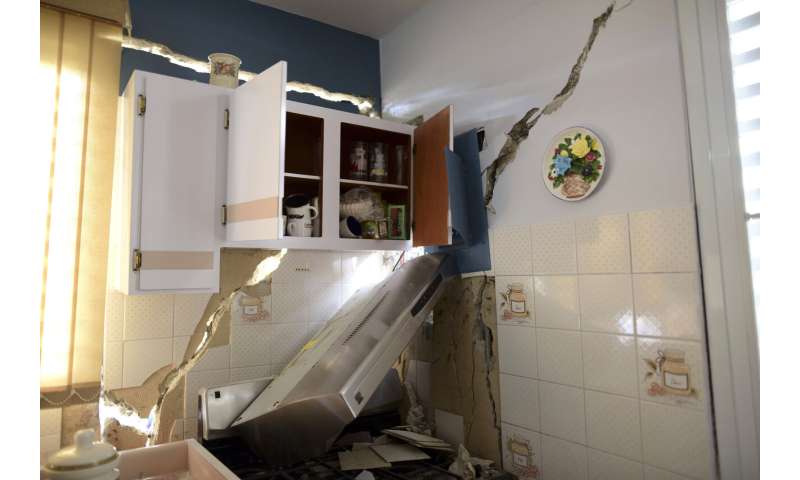
The house of William Mercuchi is damaged after the previous day's magnitude 6.4 earthquake in Yauco, Puerto Rico, Wednesday, Jan. 8, 2020. More than 250,000 Puerto Ricans remained without water on Wednesday and another half a million without power, which also affected telecommunications. (AP Photo/Carlos Giusti) -
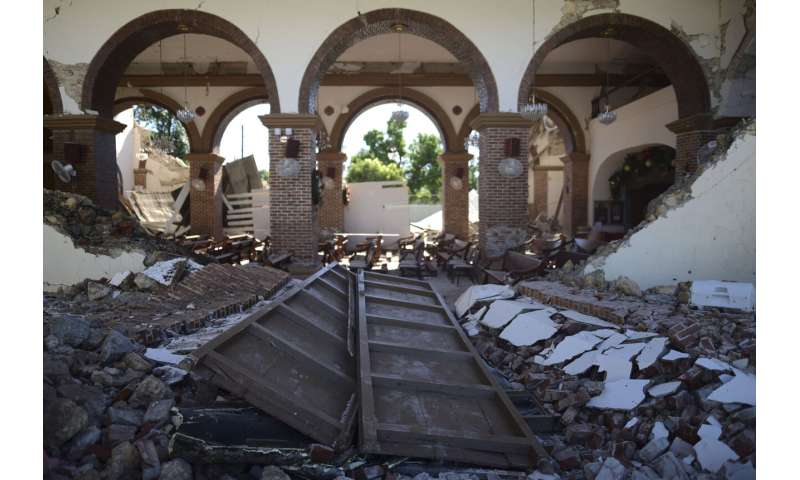
The Immaculate Concepcion Catholic church lies in ruins after an overnight earthquake in Guayanilla, Puerto Rico, Tuesday, Jan. 7, 2020. A 6.4-magnitude earthquake struck Puerto Rico before dawn on Tuesday, killing one man, injuring others and collapsing buildings in the southern part of the island. (AP Photo/Carlos Giusti) -
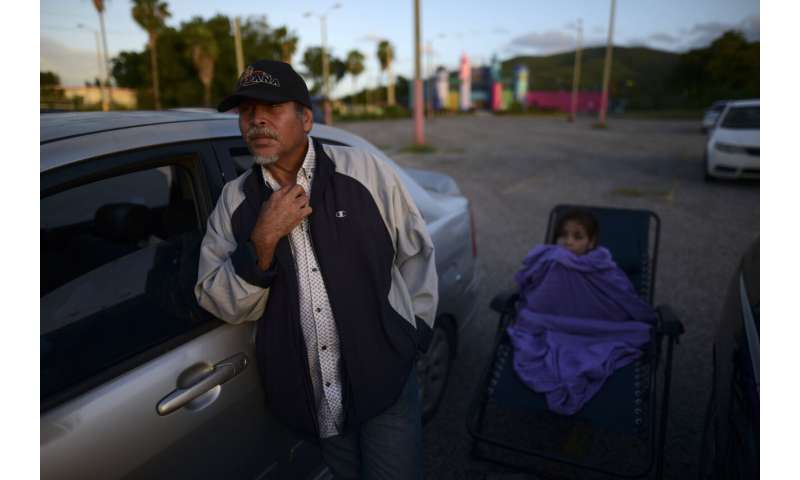
Eddie Correa, 61, and his 10-year old grand daughter Delancy Torres are up early after spending the night in their car at a parking lot after Tuesday's 6.4 magnitude earthquake in Guayanilla, Puerto Rico, at sunrise Friday, Jan. 10, 2020. Hundreds of thousands of Puerto Ricans are still without power and water, and thousands are staying in shelters and sleeping on sidewalks since Tuesday's earthquake. (AP Photo/Carlos Giusti)
Meanwhile, scientists are still investigating the reason behind the constant shaking, fascinated that the aftershocks—in a departure from normal behavior—seem to be occurring along several faults, including the Punta Montalva one.
"Some of them we don't even know they're there until they talk," said Leeds, the USGS seismologist. "And now it's talking very loudly."
© 2020 The Associated Press. All rights reserved.


















